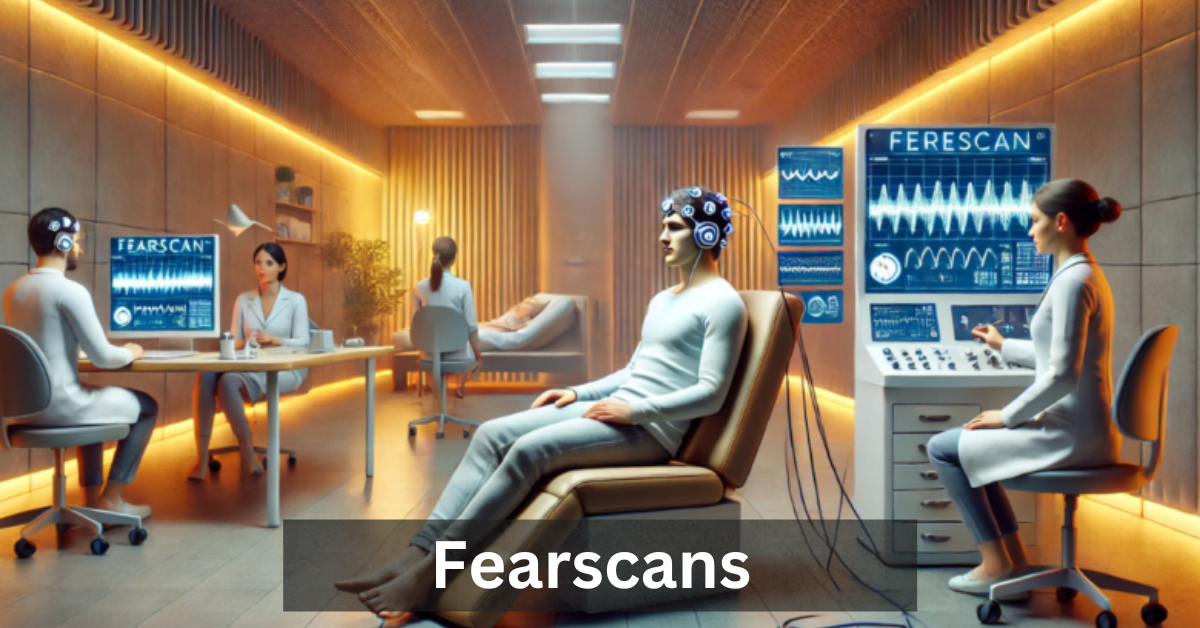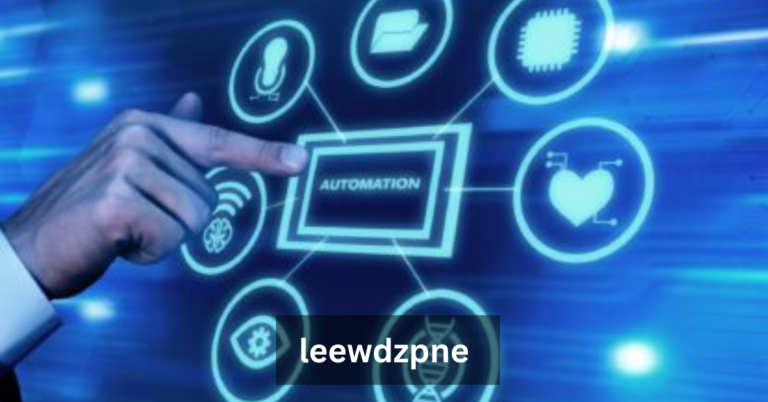Fearscans: Revolutionizing Emotional Detection and Response
Fearscans refer to advanced technologies designed to detect and interpret human emotions, specifically fear, through physiological responses. These technologies are built upon the principles of biometric fear monitoring, utilizing emotion recognition technology to provide deeper insights into the emotional state of individuals. Fearscans use non-invasive biometric sensors that measure physiological responses such as heart rate variability, skin conductance, and facial expressions to assess fear. As psychological assessment tools evolve, fearscans are becoming an essential part of various industries, from mental health to security and entertainment.
The growing importance of emotional detection stems from its ability to provide objective data on how individuals respond to emotional stimuli, without the need for verbal communication. This technology’s versatility is leading to its adoption in both practical and therapeutic contexts, influencing everything from consumer behavior analytics to mental health research.
How Do Fearscans Work?
Fearscans rely heavily on biometric sensors to capture physiological data, which is then analyzed to detect fear. These sensors, such as skin conductance sensors, heart rate monitors, and even electroencephalography (EEG), are non-invasive tools that measure subtle physical changes that occur when an individual experiences fear. When we feel fear, our body’s fight-or-flight response is triggered, leading to noticeable changes such as increased heart rate, sweaty palms, and changes in skin conductivity. Fearscans leverage these physiological changes to gauge emotional responses in real-time.
Data Collection Methods (Heart Rate, Skin Conductance, Facial Expressions)
Fear detection involves a combination of data sources. Heart rate variability is a crucial indicator of emotional arousal and stress, while skin conductance sensors track changes in sweat levels, which increase during moments of anxiety or fear. Advanced systems even incorporate facial expression analysis using emotion recognition algorithms, where cameras detect micro-expressions that reveal hidden emotions. These multi-faceted data collection methods ensure a comprehensive analysis of emotional states.
Algorithms and Analysis for Interpreting Fear Responses
Once the biometric data is collected, it undergoes analysis via emotion recognition algorithms. These algorithms, often powered by machine learning and artificial intelligence (AI), can identify patterns in the data that correspond to emotional states, particularly fear. The algorithms analyze not just the raw data but also complex interactions between different physiological metrics to provide an accurate interpretation. This powerful integration of AI ensures that fearscans can adapt and improve over time, offering more precise results with each scan.
Applications of Fearscans
One of the most promising applications of fearscans is in the field of security and surveillance. By monitoring emotional responses, particularly fear, authorities can assess whether individuals may pose a threat or be hiding something. For instance, law enforcement agencies are increasingly using fear detection systems to profile individuals in airport security or during border control screenings. If an individual’s physiological response indicates fear in response to questions or during a search, further investigation might be warranted. This technology helps improve the accuracy and efficiency of security operations, ensuring safety while maintaining a more objective and non-invasive approach.
In Mental Health and Psychology
In mental health settings, fearscans can be used as part of psychological assessments for individuals dealing with anxiety disorders, phobias, or post-traumatic stress disorder (PTSD). By analyzing real-time emotional responses, clinicians can gain a more comprehensive understanding of their patients’ emotional states. Anxiety detection systems can track how patients respond to different therapeutic interventions, helping psychologists or psychiatrists fine-tune treatments. The ability to measure stress and fear responses gives professionals a clearer picture of emotional triggers, allowing for more personalized care.
In Entertainment and Gaming
The entertainment industry has also found unique ways to integrate fearscans, particularly within virtual reality (VR). VR game developers are using biometric sensors to measure a player’s emotional responses in real-time, enhancing the game experience. By monitoring fear responses, developers can adjust the intensity of the game to create a more immersive and emotionally engaging experience. This technology bridges the gap between human emotions and digital experiences, making video games and virtual reality environments more lifelike and thrilling.
In Consumer Insights and Marketing
Fearscan technology is also being used by marketers to better understand consumer reactions. By analyzing how individuals emotionally respond to advertisements, new products, or even store layouts, businesses can tailor their marketing strategies. For instance, emotional data analytics can reveal if a consumer is fearful or anxious when confronted with certain visuals or concepts. This can be particularly valuable for brands seeking to create advertisements that resonate with their target audiences. Whether used in advertising or product design, fear detection technologies help businesses tap into emotional insights that drive consumer behavior.
Benefits of Using Fearscan Technology
One of the key advantages of fearscan technology is its objectivity. Traditional methods of gauging emotions, like self-reports or interviews, can be biased or inaccurate, as individuals may not be fully aware of their emotional responses or may be unwilling to share them. Fearscans, however, rely on biometric data, which offers a more precise, real-time measurement of emotions, ensuring that the findings are grounded in physiological evidence rather than subjective reporting.
Early Intervention for Emotional Distress and Anxiety
For those dealing with anxiety or other emotional disorders, fearscans can facilitate early intervention. By detecting signs of fear or distress before they escalate, mental health professionals can offer timely support, whether through cognitive-behavioral therapy (CBT), mindfulness practices, or other therapeutic interventions. This early detection not only improves treatment outcomes but also empowers individuals to take control of their emotional well-being before anxiety or fear overwhelms them.
Enhanced Security Measures in High-Risk Environments
In high-risk environments, such as airports or prisons, the ability to detect fear can serve as an early warning system. Security technology companies use fearscan systems to identify individuals who may be experiencing stress or anxiety, which could indicate suspicious behavior. This helps security personnel take appropriate action, ensuring that threats are identified and neutralized before they escalate.
Ethical Considerations and Privacy Concerns
As with any technology that involves biometric data, there are significant ethical concerns surrounding its use. One of the main concerns is the potential for misuse, such as profiling individuals based on emotional responses. For instance, security agencies could use fearscan data to unfairly target individuals based on their emotional reactions, potentially violating personal freedoms. Additionally, the technology may inadvertently reveal deeply personal fears that individuals may not want to share.
Consent and Security Issues in Fearscan Implementation
When it comes to implementing fearscan technology, informed consent becomes critical. Users must fully understand how their biometric data will be used and stored. Privacy advocates warn that without proper safeguards, there is a risk of sensitive emotional data being leaked or misused. Therefore, establishing clear guidelines and security protocols is essential to maintain public trust.
Balancing Technology Use with Personal Privacy Rights
Striking a balance between technological advancements and privacy rights is a challenge. Fearscan technology has the potential to enhance many sectors, but ensuring that personal privacy is respected remains a crucial issue. Legislative frameworks need to be developed that govern the use of emotion recognition technology, focusing on data security and user consent.
Challenges and Limitations of Fearscans
One of the challenges of fearscan technology is the variability in physiological responses from person to person. Not everyone experiences fear in the same way, and factors such as age, genetics, culture, and past experiences can influence how fear manifests. This makes it challenging to create a one-size-fits-all model for analyzing emotions. Developing more nuanced algorithms that account for these individual differences is crucial for improving the accuracy of fear detection.
Potential for False Positives and Misinterpretation
Fearscan systems, while accurate, are not infallible. The potential for false positives exists, meaning a person might appear fearful when they are simply experiencing heightened stress or excitement. This misinterpretation could lead to inaccurate conclusions or unnecessary interventions, particularly in security settings. Continual improvements in emotion recognition algorithms and more refined biometric fear monitoring systems will be key to reducing these risks.
Technological Limitations in Real-Time Analysis and Large-Scale Implementation
As advanced as fearscan technologies are, there are still limitations in real-time analysis and large-scale deployment. Processing vast amounts of biometric data in real-time requires significant computational resources. Machine learning models need to be trained on diverse datasets to ensure accuracy across different environments and individuals. Overcoming these technological constraints will be a major hurdle in the widespread adoption of fearscans.
The Future of Fearscan Technology
The future of fearscans lies in the ongoing evolution of biometric emotion recognition systems. As artificial intelligence (AI) and machine learning continue to advance, these technologies are becoming increasingly adept at analyzing complex emotional data. This progression will enhance the accuracy and precision of fear detection, making it more reliable across diverse populations and settings. The use of deep learning models and more diverse training data will help address current challenges like individual variation in emotional responses.
A significant trend is the integration of multi-modal data, combining biometrics, facial expression analysis, and voice recognition to provide a more comprehensive understanding of emotional states. This approach will allow fearscans to identify subtle variations in fear responses, improving their sensitivity and reducing false positives. For example, researchers are exploring how neural networks can be trained to detect complex emotional states that are often difficult for traditional systems to interpret.
Another emerging trend is the increasing application of fearscan technologies in consumer behavior analysis, where businesses are using real-time emotional insights to optimize marketing strategies, product design, and customer experiences. Emotional analytics will likely play a key role in personalizing customer interactions and enhancing brand engagement by tailoring content to the specific emotional states of the audience.
Integration with Other Technologies
In the coming years, fearscans will likely integrate more seamlessly with other wearable technologies, such as smartwatches and fitness trackers, creating a more comprehensive view of emotional and physical well-being. These devices already track vital signs such as heart rate, blood oxygen levels, and skin temperature, which can serve as additional inputs for fearscan systems. Smartphones and augmented reality (AR) platforms could also play a pivotal role in the distribution of fearscan technologies, providing real-time feedback during immersive experiences or high-stress activities.
Moreover, the integration of fearscan technology with behavioral science will be crucial in addressing how emotions influence decisions and actions. This research will contribute to developing better interventions for mental health care, helping both patients and professionals identify and address emotional triggers before they result in psychological distress or behavioral issues.
Conclusion
Fearscan technology represents a remarkable step forward in how we understand and measure human emotions, particularly fear. With applications spanning from mental health care and security to entertainment and consumer insights, the technology has the potential to transform a wide array of industries. The ability to measure fear with high precision can lead to more effective interventions, personalized experiences, and improved public safety.
However, as with any emerging technology, fearscans present significant challenges, particularly in terms of privacy, ethics, and accuracy. As the technology continues to evolve, the ethical implications of biometric data collection, particularly in high-stakes environments like security or marketing, must be carefully considered. Balancing personal privacy with the benefits of emotional detection will be essential to ensuring the responsible use of fearscan technology.
The future of fearscan technology is bright, with ongoing advancements in AI and emotion recognition set to make these systems more accurate, adaptable, and widely applicable. Whether in enhancing mental health treatments, improving consumer experiences, or safeguarding public spaces, fearscan technology holds immense potential to revolutionize how we interact with technology and understand human emotions.
Frequently Asked Questions
How accurate are fearscans in detecting fear?
Fearscans leverage biometric data such as heart rate variability, skin conductance, and facial expression analysis to measure fear responses. While these systems are highly accurate in controlled environments, their accuracy can be influenced by individual differences and external factors, such as stress or health conditions. Ongoing advancements in machine learning and emotion recognition algorithms aim to reduce errors and improve reliability over time.
Are fearscans invasive?
Fearscan technology is typically non-invasive, using biometric sensors like heart rate monitors or skin conductance sensors that do not require any physical intrusion. These sensors are often wearable or embedded in virtual reality systems, making them easy to use without discomfort. However, the collection of sensitive emotional data raises privacy concerns, and individuals must provide informed consent for participation.
Can fearscans diagnose mental health conditions?
While fearscans provide valuable data on emotional states and fear responses, they are not designed to diagnose mental health conditions such as anxiety disorders or PTSD. Fearscans can be part of a broader psychological assessment, but clinical diagnosis should be performed by licensed mental health professionals using tools like the DSM-5.
How is fearscan data used in security settings?
In security and surveillance, fearscan technology helps law enforcement agencies and airport security measure stress or anxiety levels in individuals. This information can be used to flag potential threats based on behavioral cues linked to fear responses, allowing for enhanced screening and early intervention in high-risk environments.
What are the privacy concerns associated with fearscans?
As fearscans collect sensitive biometric data, there are valid concerns about data security and privacy. Improper handling of this data could lead to unauthorized surveillance or profiling. Therefore, privacy advocates emphasize the need for strong encryption, consent protocols, and transparency about how the data is used, ensuring individual rights are protected.
Stay in touch to get more updates & alerts on EroMe! Thank you






